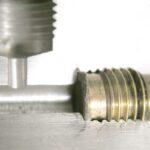Teeth misalignment is best resolved in childhood or adolescence, but for some people, they either cannot get treatment until adulthood or develop tooth problems later in life. Wearing braces is the most common way to fix crooked teeth, but it may be a little awkward to have braces when you’re already an adult.
Self-consciousness is the most common reason why some adults don’t want to wear regular metal braces, and it is an extremely valid one. After all, people may find it hard to take you seriously at work when your teeth look like an adolescent child’s. However, letting teeth problems go on for too long can cause even more issues down the road. So, how do you fix your teeth without wearing metal braces?
Here are some of the best alternatives to consider:
1. Clear aligners
Invisalign clear aligners are discrete and removable alternatives to metal braces. They are made of plastic and need to be changed at regular intervals to help your teeth move into proper alignment. The best part is that they are not noticeable unless a person looks closely at your teeth. And since they are removable, they may be much more comfortable than traditional braces and will require little to no diet changes.
Moreover, clear aligners work faster than metal braces. Depending on the severity of misalignment, you may have to wear these aligners for nine months or longer.
2. Retainers
Regular metal braces are not always recommended for people with only slight crookedness or overcrowding. If this is the case for your teeth, a great alternative is a retainer. Although a retainer is visible on your teeth, they are much more subtle than metal braces. Besides that, you only have to wear them for a certain number of hours every day, which means that you could wear your retainers at home only.
3. Ceramic veneers
Veneers are faux teeth that are placed on top of real teeth to cover discoloration, chips, gaps, and other cosmetic tooth problems. The process of getting veneers involves removing enamel from your real teeth and then installing the veneers with a light-sensitive resin, immediately covering imperfections.
However, keep in mind that the process of removing teeth enamel is irreversible, so think hard about whether you’ll be able to replace your veneers regularly and if you are willing to make permanent changes to your real teeth.
Also, consider the type of veneers you’re going to get. Veneers are made from ceramic or resin. If you want long-lasting veneers, choose ceramic ones, which can last for up to ten to fifteen years. The latter is also a good option, but if you grind your teeth, resin veneers may get damaged prematurely.
4. Lingual braces
Lingual braces use wires and brackets just like regular metal braces, but they are placed at the back of your teeth instead of the front. So essentially, you are wearing metal braces, but they won’t be seen by people unless you open your mouth widely, making it a great option for adults who are not comfortable with wearing regular braces.
One disadvantage of lingual braces is that they are more difficult to clean since they are located at the back of the teeth. That said, you must put in the extra work of cleaning your teeth if you decide to go with this option. Furthermore, lingual braces are not applicable to all types of tooth problems. For instance, they cannot be used to correct overbite and are not applicable for people with small teeth.
5. Ceramic braces
Ceramic braces are similar to traditional braces, except that the brackets are made from clear or tooth-colored ceramic. As a result, they are less noticeable than braces made from stainless steel. However, ceramic braces will have metal wires that are visible when you open your mouth–nevertheless, they are much more subtle than metal braces.
6. Dental bonding
If you don’t want to do something as drastic as shaving down your teeth for veneers and if you only have minor shaping or spacing issues, consider dental bonding. This procedure uses a resin material to fill in small gaps that will become durable over time, improving your smile without braces or veneers. Moreover, you won’t need to adjust your diet for this type of dental correction.
Dental imperfections can do a number on anyone’s self-esteem issues, especially in adulthood. However, wearing braces is not always an appealing solution to misalignment or bite problems for adults due to various reasons. Luckily, there are a lot of alternatives that you can choose from if you don’t want to wear traditional metal braces.
Meta title:Bye Bye Braces: 6 Best Alternatives to Braces for Adults
Meta desc: For adults, it might be a little awkward to be sporting braces. If you don’t want to wear regular braces, you need to know your next best options. Read on to learn more.
 Mastering Online Masterclasses: Choosing the Right Online Violin Instructors
Mastering Online Masterclasses: Choosing the Right Online Violin Instructors  Empowering Healthcare Professionals: How WT Farley Oxygen Regulators Enhance Patient Care
Empowering Healthcare Professionals: How WT Farley Oxygen Regulators Enhance Patient Care  Elevate Your Collection: Unveiling the Beauty of Custom Wine Cellars in Ottawa
Elevate Your Collection: Unveiling the Beauty of Custom Wine Cellars in Ottawa  Enhancing Your Online Presence with Real Estate SEO Services
Enhancing Your Online Presence with Real Estate SEO Services  The Epitome of Luxury: Elevating Spaces with Imperial High-End Kitchen Cabinets
The Epitome of Luxury: Elevating Spaces with Imperial High-End Kitchen Cabinets  Pokémon go accounts- Exploring the reasons behind player demand
Pokémon go accounts- Exploring the reasons behind player demand  Pokemon go shortcut to greatness – Buy now
Pokemon go shortcut to greatness – Buy now  Online slot games for classic fruit machine lovers
Online slot games for classic fruit machine lovers  Ensuring Security In Online Fund Transfers: Understanding Fraud Prevention And Risk Mitigation
Ensuring Security In Online Fund Transfers: Understanding Fraud Prevention And Risk Mitigation 




